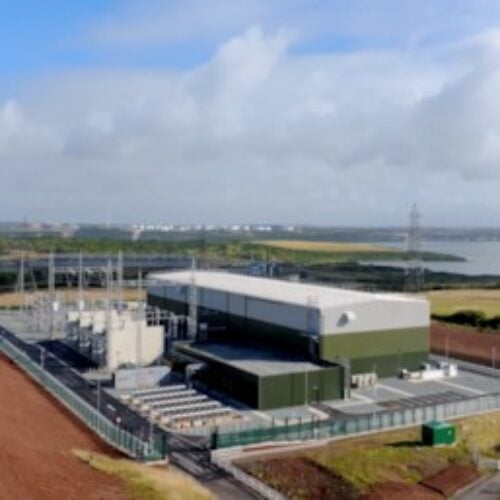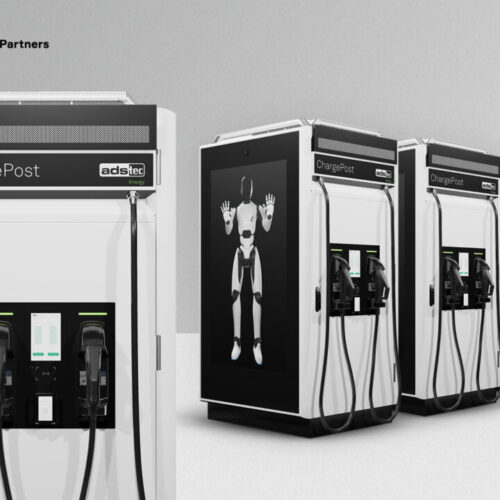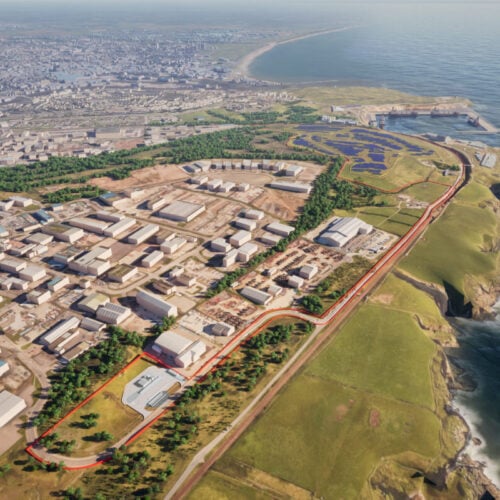In this contributed blog, Barny Evans, director of sustainability and ESG at independent advisory Turley looks at how microgrids can power data centres with clean energy.
Artificial intelligence (AI) is reshaping the world, and with it comes an insatiable demand for data processing. A government survey revealed that most (60%) of the public have used AI within the past three months. Every chatbot response, image generation and predictive model runs on vast computing power housed in data centres.
In the UK, these facilities currently account for about 1% of total electricity use. That might sound manageable, but National Grid projections suggest a sixfold increase over the next decade, reaching 15 terawatt-hours—around 4-5% of the nation’s total energy consumption.
To put that into perspective, that’s roughly the equivalent of the entire UK office sector’s power demand. If we want a successful data centre ecosystem and to achieve net zero targets, we need to work out how to provide that energy cleanly. But how?
One answer lies in micro-grids—smarter, more localised energy networks that share energy between buildings and other energy users. Instead of treating data centres as isolated power-hungry islands, we should integrate them into a broader energy ecosystem.
The microgrid solution
Currently, data centres are built wherever planning and energy constraints allow, often in isolation. They plug into the national grid, drawing vast amounts of power that needs to be generated, transmitted and balanced at a systemic level. This approach is outdated and inefficient.
Now imagine a different model. Instead of being standalone entities, data centres are co-located with other facilities—housing, electric vehicle charging, logistics hubs, manufacturing plants and hotels—connected by a dedicated private network to form a microgrid. This setup, which is being increasingly implemented, would allow these diverse energy producers and users to share power dynamically.
The mix of EV charging, logistics and data centres is a good example of this. Warehouses can have huge solar roofs, often producing more power than the warehouse can use. This solar generation peaks when energy demand for data centre cooling also peaks. EV charging, especially for HGVs, can draw a lot of power, but can also be flexible, reducing the charge rate or even discharging if necessary.
By linking these physically through a microgrid, the renewable energy generated on-site can be used rather than exported, saving money and reducing strain on the national grid and thus enabling data centres to continue powering the AI revolution.
Diversity of demand
A key advantage of this approach is the diversity of demand across different facilities. Research suggests that around 40% of data centre energy demand is shiftable, meaning they can be much more active participants in helping balance supply and demand. While some processes require real-time computation, many tasks—such as offline data processing—can be scheduled at times of low grid demand, like 2am when energy is plentiful or 2pm when it is very sunny.
In the example of logistics sheds, their operations are typically busiest during the day but require far less power at night. By aligning these different consumption patterns within a microgrid, we can smooth energy demand, reduce peaks and use available renewables more effectively.
The UK’s power infrastructure is already under immense pressure, with grid constraints regularly delaying new industrial developments. A microgrid model would reduce reliance on costly national grid upgrades while ensuring stable, lower-carbon power for all connected facilities. With this approach, we can ease grid strain and ensure that AI innovation can continue.
Planning challenges and opportunities
Of course, shifting to a microgrid approach isn’t without obstacles.
One major barrier is the need for physical infrastructure changes. Most data centres have been developed with traditional grid connections in mind and reconfiguring them to operate within a private network would require new investment.
In addition, data centres remain encapsulated within the wider Use Class of B8 or as a sui generis use.
A clearly defined use class for data centres would ensure that the need for both traditional employment uses and data centres are met and planned for. A Local Planning Authority’s evidence base would be required to holistically identify the need for data centres as a separate use, in a similar manner to how the existing Employment Land Review assesses the need for offices, industry and warehousing – ensuring that the full need for data centres is captured.
It has been widely acknowledged that data centres are locationally constrained principally due to access to the fibre network, power generation and conglomeration (Slough Trading Estate in the West London Availability Zone being a prime example).
There needs to be greater recognition of the cross-boundary implications this has on planning and a greater emphasis on meeting data centre need (and their supporting infrastructure) through strategic planning.
In terms of decision-making, the specific references to data centres in the National Planning Policy Framework should now ensure that they are afforded greater weight in the determination of planning applications. For developers looking to navigate these regulatory complexities, working with independent experts who understand these technical landscapes can be crucial. Such partners can provide actionable strategies to integrate microgrids seamlessly into existing infrastructure.
Whilst the Framework calls for local planning authorities to deal with planning applications for data centres more favourably, it does, however, remain to be seen how local planning authorities and communities respond to these changes to deliver this mission critical infrastructure.
Despite the persistent myth that data centres generate few jobs, these facilities are actually engines of high‐calibre, skilled employment. They create roles for system administrators, engineers, and technical specialists while also catalysing indirect employment through construction, supply chains, and support services. In many cases, the positions are highly specialised and well compensated, contributing not only to local job markets but also to broader economic growth and innovation in the digital sector.
For a thriving AI ecosystem, it is essential that planning frameworks recognise and build on the pivotal role data centres play in supporting the government’s AI agenda and driving economic growth. By incorporating data centre requirements into strategic planning, local authorities can create an environment that meets high-energy demands sustainably while also delivering significant employment and wealth creation benefits. Embracing flexible, forward-thinking planning policies will empower both public and private sectors to work together toward a resilient, high-growth digital future.
The psychological barrier
Perhaps the biggest challenge isn’t technical or regulatory—it’s psychological. Right now, companies are fiercely protective of their energy security.
The prevailing mindset is that each data centre must ‘wrap its arms’ around as much power capacity as possible to guarantee reliability. This hoarding mentality leads to inefficiencies, with energy resources sitting idle when they could be put to better use elsewhere.
Shifting to a microgrid approach requires a fundamental change in thinking.
The challenge is demonstrating that a more collaborative system can still meet peak demand without compromising resilience. Sharing pilot projects and real-world case studies will be crucial in proving that flexibility and efficiency can go hand in hand.
Overcoming this psychological barrier is critical for AI’s long-term sustainability. If businesses continue to operate in isolation, then the AI revolution will be more expensive, slower and slow our decarbonisation.
A smarter, greener future
As AI continues to expand, we can’t afford to ignore the sustainability implications of its growing power needs.
The current approach to data centre energy consumption is inefficient, unsustainable, and increasingly unworkable. A shift towards microgrids offers a way to meet AI’s demand without overloading the grid or derailing decarbonisation efforts.
If we can move beyond outdated assumptions and embrace the idea that energy can be shared intelligently, we have a real opportunity to build a smarter, greener future.





